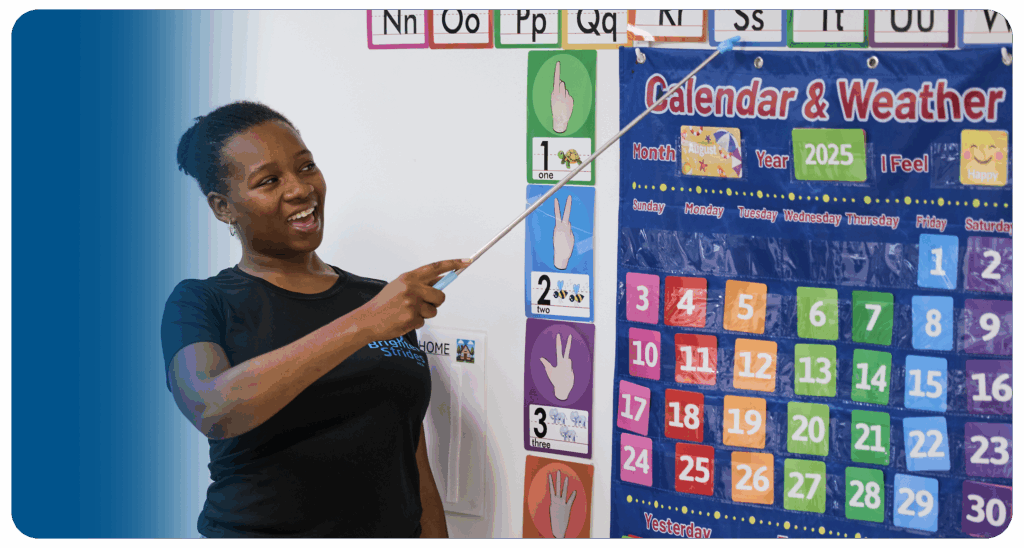Understanding Neurodiversity Symbols
Neurodiversity symbols play a significant role in representing and raising awareness about the experiences of neurodivergent individuals. Two commonly recognized symbols in the neurodiversity community are the Jigsaw Puzzle Pieces symbol and the Rainbow Infinity Symbol.
Jigsaw Puzzle Pieces Symbol
The Jigsaw Puzzle Pieces symbol, created by the National Autistic Society, is widely associated with autism. It represents the complex and “puzzling” nature of autism, with its unique characteristics and challenges. The symbol is often depicted with puzzle piece patterns, and variations like the ribbon and butterfly symbols also incorporate this pattern. According to Paul Micaleff, an autistic blogger, there is controversy surrounding this symbol, as some individuals feel it implies that they are a “problem to be solved”. It’s important to note that opinions on this symbol vary within the autistic community.
Rainbow Infinity Symbol
Originally designed to represent autistic individuals in gold color, the Rainbow Infinity Symbol has evolved to become a symbol of acceptance and support for all neurodiversity. The rainbow colors within the infinity symbol represent pride and inclusivity, emphasizing the lifelong nature of neurodivergent conditions. This symbol signifies that every individual has unique strengths and contributions to make, and it promotes the idea of embracing and celebrating neurodiversity as an integral part of society.
These symbols, along with other variations such as the puzzle ribbon and butterfly symbol, aim to raise awareness and foster understanding about neurodiversity. It’s important to recognize that symbols can hold different meanings for different people, and there is ongoing discussion within the neurodivergent community about the appropriateness and representation of these symbols [2].
By understanding the significance of these symbols, we can contribute to a more inclusive and accepting society that values the diversity of neurodivergent individuals.
Read about: The Visual World of Autism: Symbols & Colors Deciphered
Evolution of Neurodiversity Symbols
Neurodiversity symbols play a significant role in representing and raising awareness about the experiences of individuals with neurodivergent conditions. Over time, different symbols have emerged, each with its own symbolic representations, controversies, and perspectives.
Symbolic Representations
One of the most well-known neurodiversity symbols is the Jigsaw Puzzle Pieces symbol, initially created by the National Autistic Society. This symbol represents the complex and “puzzling” nature of autism. It is commonly depicted with puzzle piece patterns, and there are variations like the ribbon and butterfly symbols with the same pattern. The intention behind this symbol is to highlight the diverse and intricate aspects of autism [1].
However, the Jigsaw Puzzle Pieces symbol has sparked controversy and received mixed reactions. Some individuals argue that it implies they are a “problem to be solved” and perpetuates the idea that they are incomplete or broken. This perspective led to discussions about the need for symbols that focus more on celebrating the strengths and abilities of neurodivergent individuals rather than emphasizing their differences [1].
Another symbol that has gained recognition is the Rainbow Infinity Symbol. Initially designed to represent autistic individuals in gold color, it has evolved to become a broader symbol of acceptance and support for all forms of neurodiversity. The rainbow colors within the infinity symbol signify pride and the inclusion of all individuals within the neurodivergent community. This symbol emphasizes the lifelong nature of neurodivergent conditions and promotes the message that people with neurodivergent conditions have unique strengths and abilities that should be celebrated and appreciated [1].
Controversies and Perspectives
While the Rainbow Infinity Symbol has gained popularity and positive connotations associated with inclusion and acceptance, it has also faced controversies. Some argue that it may not adequately convey the uniqueness of each individual’s experience with autism and could potentially promote the idea of “curing” or “fixing” autism. These discussions have highlighted the importance of symbols that accurately represent and respect the diverse experiences and perspectives within the neurodivergent community.
As the understanding of neurodiversity continues to evolve, so too may the symbols associated with it. The controversies surrounding existing symbols have sparked important conversations about how best to represent and support individuals with neurodivergent conditions. It is crucial to consider the perspectives and input of the neurodivergent community when developing and promoting symbols to ensure that they accurately reflect the experiences, strengths, and aspirations of individuals with neurodivergent conditions.
Rerad about: Symbols That Represents Autism
Neurodiversity Movement
The neurodiversity movement, which emerged during the 1990s, has had a profound impact on society by promoting acceptance and inclusivity for all individuals, regardless of their neurological differences. Coined by Australian sociologist Judy Singer, the term “neurodiversity” aims to advocate for the rights and recognition of what she refers to as “neurological minorities”.
Origin and Purpose
The neurodiversity movement began as a response to the prevailing medical model that pathologized neurological differences, particularly conditions such as autism, ADHD, and dyslexia. It sought to challenge the notion that these conditions are inherently negative or need to be “fixed.” Instead, the movement emphasizes that neurological differences are natural variations of the human brain and should be respected and valued.
The movement gained momentum through the power of online platforms, enabling individuals with neurodivergent traits to connect, share experiences, and advocate for their rights. It has provided a platform for self-advocacy, allowing individuals to assert their identities and demand acceptance on their own terms.
Impact on Society
The neurodiversity movement has had a significant impact on society, particularly in terms of fostering inclusion and challenging societal norms. By raising awareness and promoting acceptance, the movement has contributed to a shift in public perception. It has helped dispel stigmas associated with neurodivergent conditions and fostered a more compassionate and inclusive society.
One area where the neurodiversity movement has made notable strides is in addressing the employment challenges faced by individuals on the neurodivergent spectrum. According to Creative Spirit, adults with intellectual and developmental disabilities face an unemployment rate of 85%, which is eight times higher than that of people without disabilities. In response, organizations such as SAP, Google, and Microsoft have introduced programs to onboard employees on the autism spectrum and other neurodiverse conditions. These initiatives aim to provide meaningful employment opportunities and create inclusive work environments that capitalize on the unique strengths and talents of neurodivergent individuals.
Furthermore, the neurodiversity movement has influenced education systems to adopt more inclusive practices. It has emphasized the importance of recognizing and accommodating different learning styles, allowing students with neurodivergent traits to thrive in educational settings. By challenging traditional notions of intelligence and success, the movement has paved the way for more equitable and accessible education for all.
In summary, the neurodiversity movement has played a significant role in fostering acceptance, challenging societal norms, and promoting inclusivity for individuals with neurodivergent traits. Through its advocacy efforts, the movement has made a tangible impact on society by addressing employment disparities, promoting inclusive education, and reshaping public perceptions.
Read about: Uniting for Autism Awareness Month
Neurodivergent Visibility
In the quest for greater understanding and acceptance of neurodiversity, symbolic representation plays a significant role. The use of symbols helps create visibility and recognition for the experiences and perspectives of neurodivergent individuals. Two prominent symbols that have emerged in this context are the Jigsaw Puzzle Pieces Symbol and the Rainbow Infinity Symbol.
Symbolic Representation
The Jigsaw Puzzle Pieces Symbol, often associated with autism, has been used for several decades to represent neurodivergent individuals. The puzzle pieces are intended to represent the complexity and diversity of the autistic community. However, this symbol has been subject to controversy due to its association with attempts to “solve” or “fix” individuals on the autism spectrum. Some individuals within the community find it stigmatizing and prefer symbols that emphasize acceptance rather than a need for “completion.”
In recent years, the Rainbow Infinity Symbol has gained popularity as a symbol of neurodiversity and acceptance. Initially designed to represent autistic individuals in gold color, it has evolved to represent acceptance and support for all neurodivergent individuals. The rainbow colors within the infinity symbol signify pride and the inclusion of all individuals in the neurodivergent community. It emphasizes the lifelong nature of these conditions and promotes the idea that neurodivergent individuals are valued members of society [3].
Advocacy for Acceptance
The use of symbols like the Rainbow Infinity Symbol has become a powerful tool for advocacy and raising awareness about the experiences of neurodivergent individuals. This symbol represents the idea that autism and other neurodivergent conditions are not something to be cured or fixed but rather accepted and embraced. It promotes the message that individuals with neurodivergent conditions have unique strengths and abilities that should be celebrated and appreciated [3].
The Rainbow Infinity Symbol has gained popularity due to its positive connotations and association with inclusion and acceptance. It has become a widely recognized symbol for autism awareness, representing the idea that the possibilities for individuals with autism and other neurodivergent conditions are endless. The symbol conveys the message that neurodivergent individuals deserve respect, understanding, and equal opportunities in all aspects of life.
By using symbols like the Rainbow Infinity Symbol, advocates and individuals within the neurodivergent community are working to increase visibility and promote acceptance. These symbols serve as a reminder that neurodiversity is a natural variation of the human experience and should be celebrated rather than stigmatized. They play a crucial role in challenging societal norms and creating a more inclusive and accepting world for all individuals, regardless of their neurodivergent traits.
Neurodiversity in Society
The neurodiversity movement has had a profound impact on society, advocating for inclusion and challenging stereotypes related to neurodivergent individuals. This section will explore two key aspects of neurodiversity in society: advocating for inclusion and challenging stereotypes.
Advocating for Inclusion
The neurodiversity movement has played a significant role in addressing the challenges faced by the neurodivergent community, particularly in areas such as education and employment. By promoting acceptance and understanding, the movement has helped individuals build confidence, self-advocacy, and self-esteem. It has also pushed for improved accessibility, inclusion, and representation in various domains of society.
In the realm of education, the neurodiversity movement has emphasized the importance of providing appropriate accommodations and support for neurodivergent students. This includes implementing individualized education plans, offering assistive technologies, and fostering inclusive learning environments. By recognizing and valuing the unique strengths and perspectives of neurodivergent individuals, education systems can better meet their needs and create a more inclusive educational experience.
Similarly, in the workplace, the neurodiversity movement has challenged traditional notions of employment by advocating for inclusive hiring practices. By highlighting the talents and abilities of neurodivergent individuals, employers are encouraged to provide equal opportunities and accommodations. This has led to the creation of neurodiverse-friendly workplaces that embrace diversity and provide support tailored to the needs of neurodivergent employees.
Challenging Stereotypes
A key aspect of the neurodiversity movement is challenging the stereotypes and misconceptions surrounding neurodivergent individuals. By promoting a “different, not less” mentality, the movement aims to destigmatize neurodivergence and disability. It seeks to replace negative perceptions with a more balanced valuation of the unique gifts and needs of neurodivergent individuals.
Symbols, such as the rainbow infinity sign and the neurodiversity symbol, play a crucial role in challenging stereotypes and providing visibility for the neurodivergent community. The rainbow infinity sign represents the infinite variations in human neurology, emphasizing that neurodivergent minds are valuable and essential parts of human diversity. Each color in the rainbow symbolizes the unique strengths, talents, and perspectives of neurodivergent individuals. The neurodiversity symbol itself aims to shift mainstream perceptions by celebrating neurodivergence and promoting a more inclusive society.
By challenging stereotypes, the neurodiversity movement aims to create a society that recognizes and embraces the contributions of neurodivergent individuals. This shift in perspective benefits not only the neurodivergent community but also society as a whole, as it fosters a more inclusive and diverse environment.
In conclusion, the neurodiversity movement is making strides in advocating for inclusion and challenging stereotypes. By promoting acceptance, providing support, and recognizing the unique strengths of neurodivergent individuals, society can create a more inclusive and understanding environment for everyone.
References
- https://learn.rumie.org/jR/bytes/what-do-neurodiversity-symbols-mean/
- https://www.autismparentingmagazine.com/autism-symbols/
- https://www.health.harvard.edu/blog/what-is-neurodiversity-202111232645
- https://www.cdc.gov/autism/treatment/index.html
- https://www.healthline.com/health/autismtreatment
- https://www.ncbi.nlm.nih.gov/pmc/articles/PMC5733418




